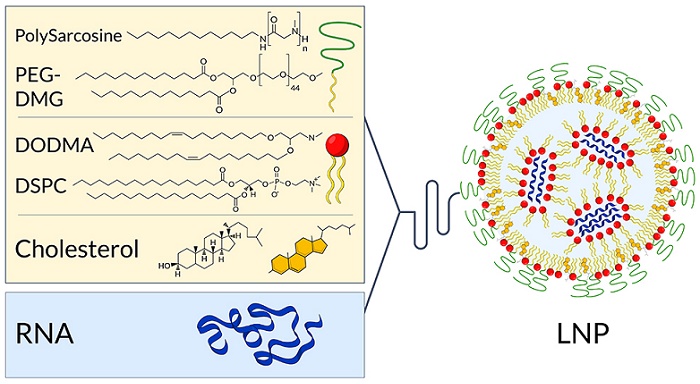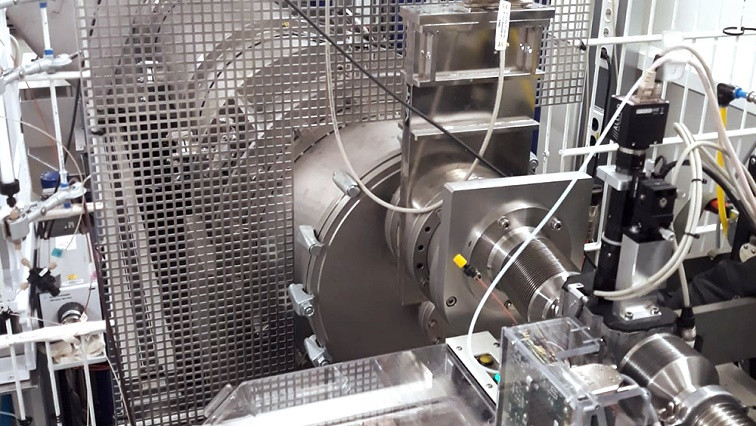BioNTech, the biotech company that together with Pfizer recently presented the first positive results for a COVID-19 vaccine, used one of EMBL Hamburg’s facilities at DESY‘s PETRA III X-ray source for their research on vaccine development. BioNTech, together with Johannes Gutenberg University Mainz (JGU), Tel Aviv University (TAU), Leiden University, and Forschungszentrum Jülich, recently published results of several studies on how RNA can be better packaged and delivered into human cells.
The vaccine candidates from BioNTech and Pfizer, as well as those from biotech company Moderna, belong to a new class of vaccines that use messenger RNA (mRNA): an instruction-carrying molecule that tells a cell to make a specific protein. In this new approach, mRNA molecules that contain instructions for making a key protein of a pathogen are introduced into the human body. Cells that take up the mRNA start to produce the pathogen’s protein.
This lasts only for a short time, because the mRNA is soon degraded. The mRNA and its resulting protein do not make a person ill, but are sufficient to train the immune system to recognise and destroy the pathogen. Interestingly, this method can be used to gain immunity not only to bacterial and viral infections, but also to certain types of cancer.
Delivering the mRNA into cells is challenging. If pure mRNA was injected into the body, it would be immediately degraded before it could even be taken up by cells. To protect the precious mRNA from damage, scientists develop ways to package it into tiny particles, known as nanoparticles, and deliver it into cells.
 Lipid nanoparticles (LNP) are tiny particles (less than 100n diameter) made of lipids, which are used in the biotechnology industry to deliver molecules, such as RNA, to cells. Polyethyleneglycol-Dimyristoyl glycerol (PEG-DMG), 1,2-Dioleyloxy-3-dimethylaminopropane (DODMA), 1,2-distearoyl-sn-glycero-3-phosphocholine (DSPC).
Lipid nanoparticles (LNP) are tiny particles (less than 100n diameter) made of lipids, which are used in the biotechnology industry to deliver molecules, such as RNA, to cells. Polyethyleneglycol-Dimyristoyl glycerol (PEG-DMG), 1,2-Dioleyloxy-3-dimethylaminopropane (DODMA), 1,2-distearoyl-sn-glycero-3-phosphocholine (DSPC).
To analyse the molecular structure of nanoparticles carrying mRNA, BioNTech used the EMBL Hamburg’s beamline P12 dedicated to small-angle X-ray scattering (SAXS), a technique that allows studying the molecular structure of particles directly in solution. This helped BioNTech to study the structure, efficiency, and behaviour of nanoparticles made of lipids, or a combination of lipids and biopolymers, under different conditions.
This will enable the researchers to understand what makes some nanoparticles perform better than others, and to adapt them to desired applications. This could include, for example, modifying the release of mRNA in the cell or adjusting the nanoparticles to be more suitable for certain cell types.
Although the mRNA-based technology is very new and its long-term efficacy still needs to be tested, it has great potential to enable rapid development of vaccines and treatments for various diseases in future. This work also shows the importance of collaboration between industry and research facilities such as those at EMBL, to drive progress and innovation in technology and medicine.
Read the original article on European Molecular Biology Laboratory (EMBL).







